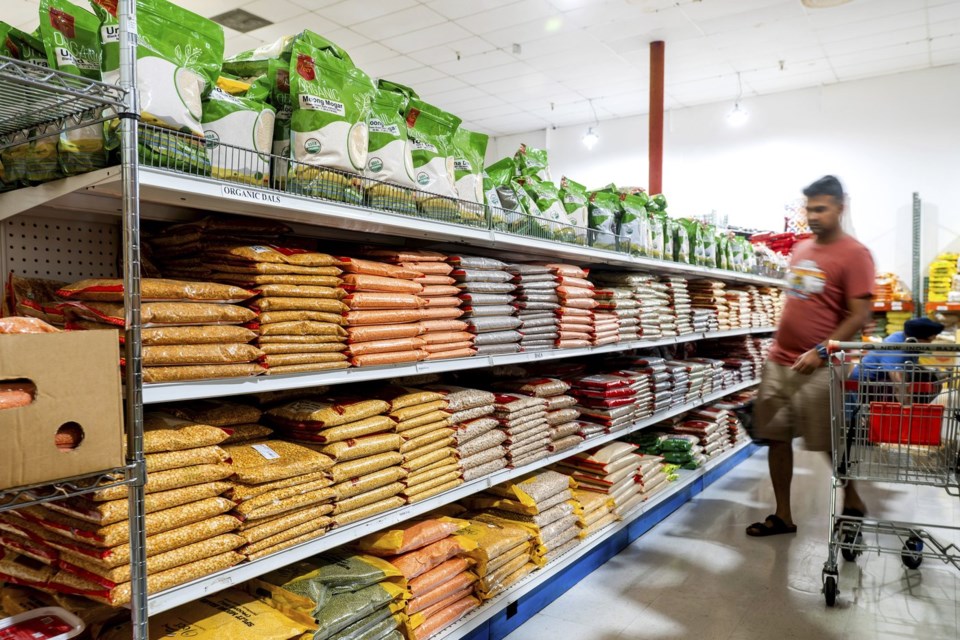WASHINGTON (AP) — President Donald Trump began levying higher import taxes on dozens of countries Thursday, just as the economic fallout of his monthslong tariff threats has begun to create visible damage for the U.S. economy.
Just after midnight, goods from more than 60 countries and the European Union became subject to tariff rates of 10% or higher. Products from the European Union, Japan and South Korea are taxed at 15%, while imports from Taiwan, Vietnam and Bangladesh are taxed at 20%. Trump also expects the EU, Japan and South Korea to invest hundreds of billions of dollars in the U.S.
“I think the growth is going to be unprecedented,” Trump said Wednesday afternoon. He added that the U.S. was “taking in hundreds of billions of dollars in tariffs,” but he couldn't provide a specific figure for revenues because “we don’t even know what the final number is” regarding tariff rates.
Despite the uncertainty, the Trump White House is confident that the onset of his broad tariffs will provide clarity about the path of the world's largest economy. Now that companies understand the direction the U.S. is headed, the administration believes they can ramp up new investments and jump-start hiring in ways that can rebalance the U.S. economy as a manufacturing power.
But so far, there are signs of self-inflicted wounds to America as companies and consumers alike brace for the impact of new taxes. What the data has shown is a U.S. economy that changed in April with Trump’s initial rollout of tariffs, an event that led to market drama, a negotiating period and Trump's ultimate decision to start his universal tariffs on Thursday.
Economic reports show that hiring began to stall, inflationary pressures crept upward and home values in key markets started to decline after April, said John Silvia, CEO of Dynamic Economic Strategy.
“A less productive economy requires fewer workers,” Silvia said in an analysis note. “But there is more, the higher tariff prices lower workers' real wages. The economy has become less productive, and firms cannot pay the same real wages as before. Actions have consequences.”
Even then, the ultimate transformations of the tariffs are unknown and could play out over months, if not years. Many economists say the risk is that the American economy is steadily eroded rather than collapsing instantly.
“We all want it to be made for television where it’s this explosion — it’s not like that,” said Brad Jensen, a professor at Georgetown University. “It’s going to be fine sand in the gears and slow things down.”
Trump has promoted the tariffs as a way to reduce the persistent trade deficit. But importers sought to avoid the taxes by importing more goods before the taxes went into effect. As a result, the $582.7 billion trade imbalance for the first half of the year was 38% higher than in 2024. Total construction spending has dropped 2.9% over the past year, and the factory jobs promised by Trump have so far resulted in job losses.
The lead-up to Thursday fit the slapdash nature of Trump's tariffs, which have been variously rolled out, walked back, delayed, increased, imposed by letter and frantically renegotiated.
The process has been so muddled that officials for key trade partners were unclear at the start of the week whether the tariffs would begin Thursday or Friday. The language of the July 31 order to delay the start of tariffs from Aug. 1 said the higher tax rates would start in seven days.
On Wednesday morning, Kevin Hassett, director of the White House National Economic Council, was asked if the new tariffs began at midnight Thursday, and he said reporters should check with the U.S. Trade Representative's Office.
Trump on Wednesday announced additional 25% tariffs to be imposed on India for its buying of Russian oil, bringing its total import taxes to 50%.
A top body of Indian exporters said Thursday the latest U.S. tariffs will impact nearly 55% of the country’s outbound shipments to America and force exporters to lose their long-standing clients.
“Absorbing this sudden cost escalation is simply not viable. Margins are already thin,” S.C. Ralhan, president of the Federation of Indian Export Organizations, said in a statement.
Import taxes are still coming on pharmaceutical drugs and Trump announced 100% tariffs on computer chips. That could leave the U.S. economy in a place of suspended animation as it awaits the impact.
The president's use of a 1977 law to declare an economic emergency to impose the tariffs is also under challenge. The impending ruling from last week's hearing before a U.S. appeals court could cause Trump to find other legal justifications if judges say he exceeded his authority.
Even people who worked with Trump during his first term are skeptical that things will go smoothly for the economy, such as Paul Ryan, the former Republican House speaker, who has emerged as a Trump critic.
“There’s no sort of rationale for this other than the president wanting to raise tariffs based upon his whims, his opinions,” Ryan told CNBC on Wednesday. “I think choppy waters are ahead because I think they’re going to have some legal challenges.”
Still, the stock market has been solid during the recent tariff drama, with the S&P 500 index climbing more than 25% from its April low. The market's rebound and the income tax cuts in Trump's tax and spending measures signed into law on July 4 have given the White House confidence that economic growth is bound to accelerate in the coming months.
As of now, Trump still foresees an economic boom while the rest of the world and American voters wait nervously.
“There’s one person who can afford to be cavalier about the uncertainty that he’s creating, and that’s Donald Trump,” said Rachel West, a senior fellow at The Century Foundation who worked in the Biden White House on labor policy. “The rest of Americans are already paying the price for that uncertainty.”
Josh Boak, The Associated Press




